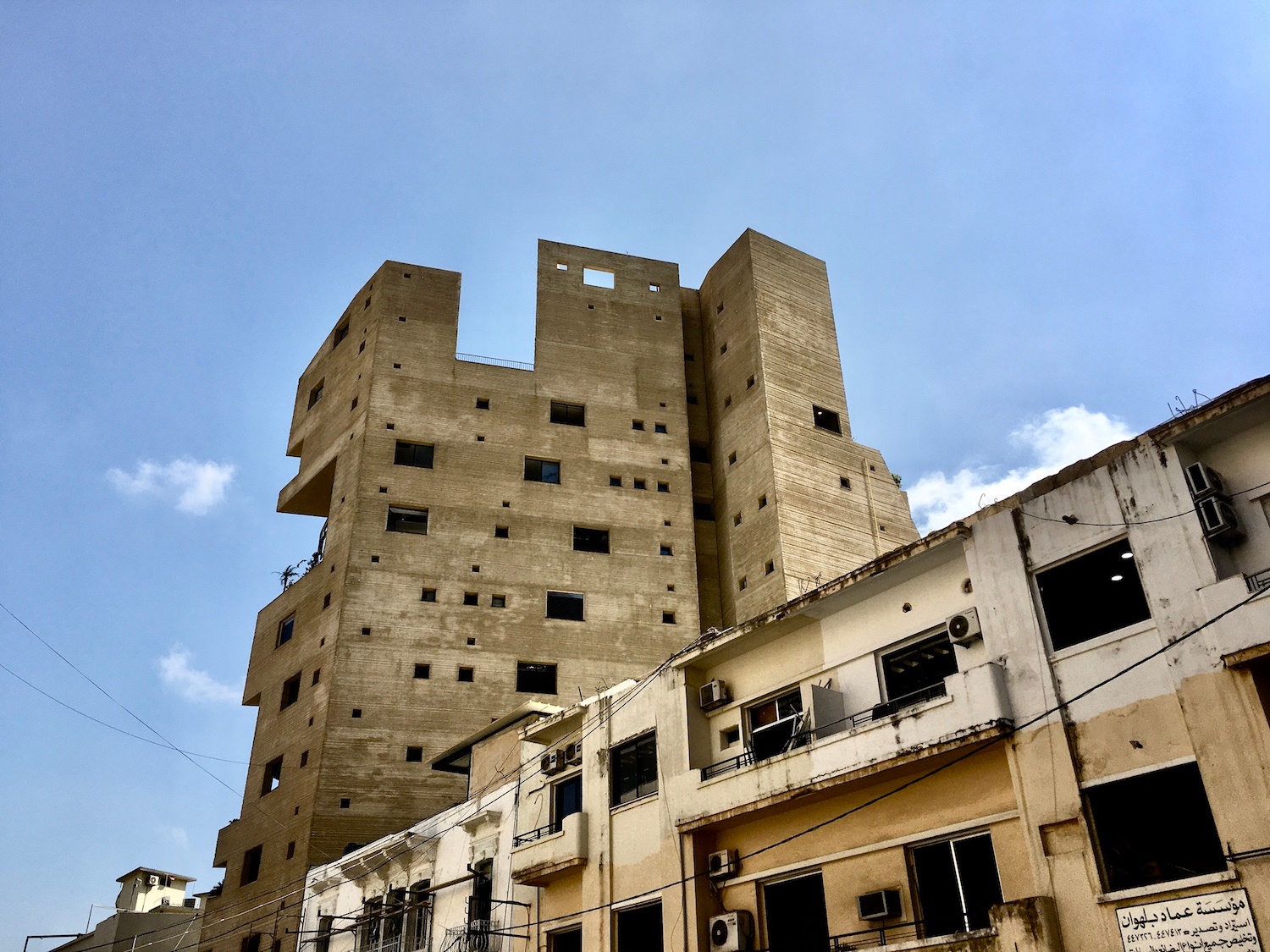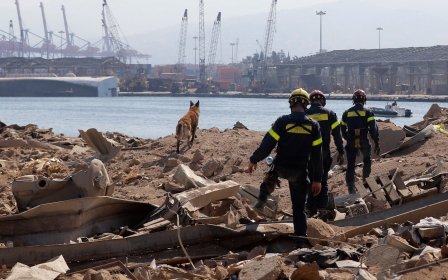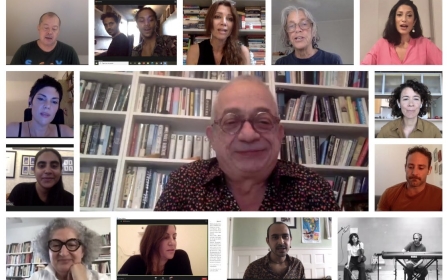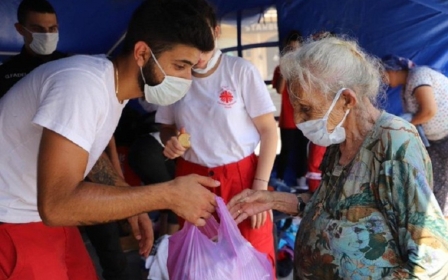'Not a window left intact': Saving Beirut's heritage from the rubble
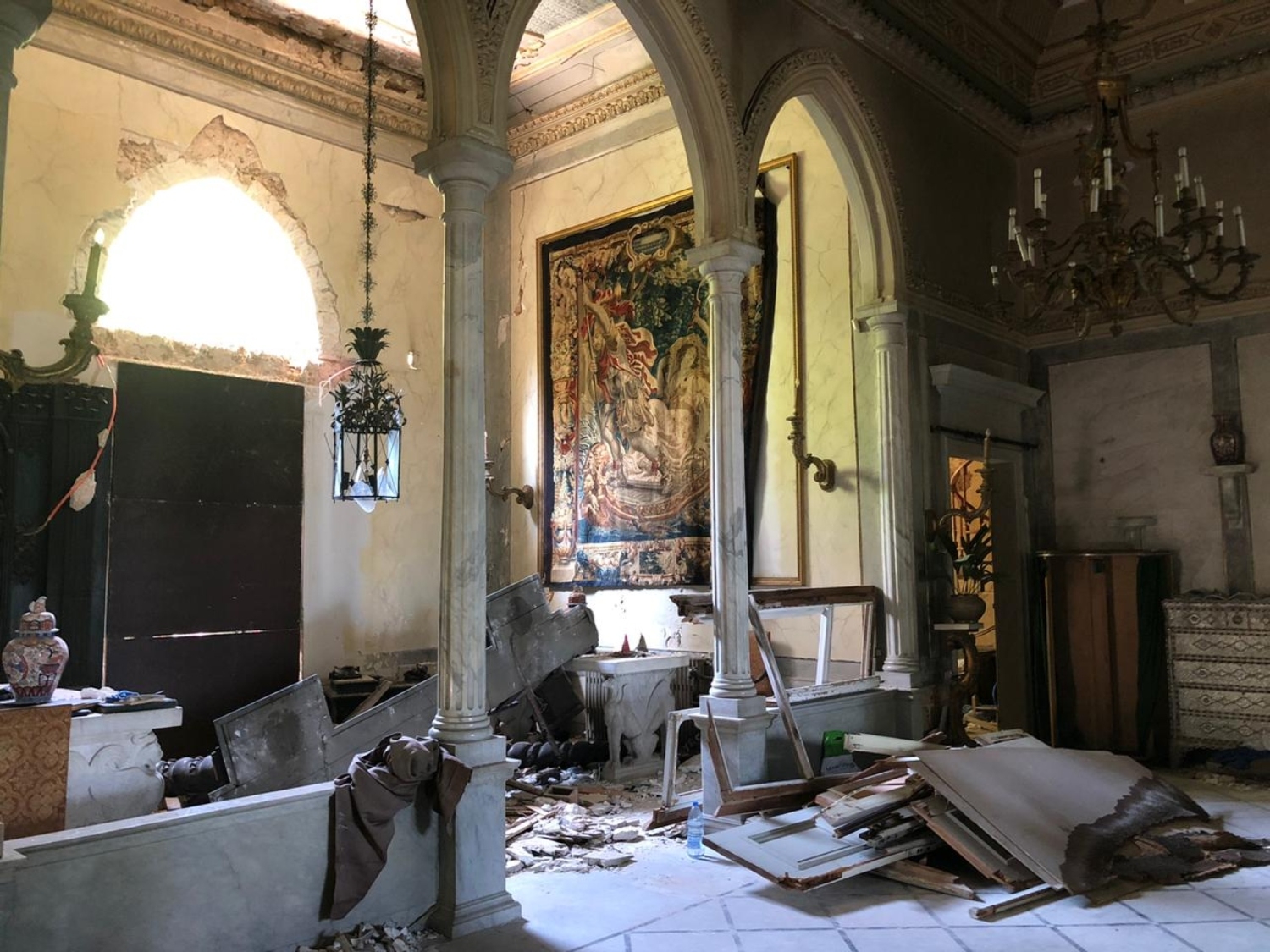
Barely half a kilometre away from ground zero of the devastating 4 August explosion in Beirut's port stands a jewel of Lebanese architecture nestled in lush greenery.
Built in 1870 by a family of aristocrats, Sursock Palace is a two-storey, castle-like mansion with three arched windows facing the sea, four turrets and a large tile roof.
New MEE newsletter: Jerusalem Dispatch
Sign up to get the latest insights and analysis on Israel-Palestine, alongside Turkey Unpacked and other MEE newsletters
Standing in the rubble, Roderick Sursock Cochrane, one of the family's heirs and present owner of the building, looks devastated.
"There is not a door or a window left intact," he told Middle East Eye. "This house survived the Ottoman era, the French mandate, both world wars, the Lebanese civil war - and it was blown up in just an instant.”
Inside the building, the scene is apocalyptic. Under the carefully crafted ceilings, 17th century Italian paintings stand slashed by shards of glass. Marble sculptures have lost their heads. The floor is covered in pieces of smashed mirrors and crystal chandeliers.
"The shock wave swept through everything, shredded everything just like an atomic explosion," Sursock Cochrane said.
The neighbourhoods most affected by the blast have a rich architectural heritage, now under threat. Residents now face the difficult task of deciding whether to rebuild or accept offers by opportunistic real estate developers, while some wonder how this catastrophe will affect Beirut's future architectural legacy.
Devastation
In the immediate aftermath of the blast, residents' first thoughts were for the safety of their loved ones.
"My mother, who is 98 years old, was sitting there. The windows fell all over her, her legs were lacerated and that wrought iron door that weighs a ton almost crushed her," Sursock Cochrane said. "My wife was on the second floor. She has bruises all over and a broken arm."
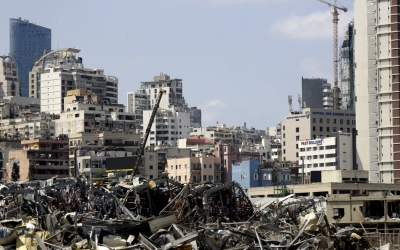
The Sursocks ran between hospitals in the wake of the explosion, seeking treatment. Days after MEE spoke to the family, Sursock Cochrane's mother later passed away on 31 August, almost a month after the explosion.
In addition to the grief, the family now has to assessing the material losses.
"I feel worse and worse every day because I gradually realise the extent of the damage," Sursock Cochrane said.
"First we have to empty the house to be able to consolidate it. Some walls need to be dismantled and rebuilt. The upper floor will be rebuilt as well, and the roof. We are removing the tiles and we have ordered plastic sheets in order to make the house waterproof because the rainy season will come soon."
The cost of repairs for the home amounts to several million US dollars. The Lebanese state, already entangled in an unprecedented economic crisis, hasn't stepped forward to help, and private insurance companies are refusing to pay up front until the causes of the explosion are determined.
With the help of a dozen volunteers, the Sursocks have swept up debris, sorted through what can be saved and packed up their bags for a temporary move out.
To repair their mansion, the Sursocks hope to receive private donations, but eventually they will have to review their economic model. A few years ago, they had opened up the gardens to organise weddings and private events. The family is now considering opening a museum.
Ravaged historic districts
A few blocks from Sursock Palace, the neighbourhoods of Gemmayzeh and Mar Mikhael are among the most severely damaged by the explosion.
Along narrow streets, many traditional houses in the area date back to the end of the 19th century. At that time, Beirut was one of the most important ports in the Mediterranean. Wealthy Lebanese merchants built large villas near the docks. Influenced by both Eastern and Westerns cultures, they are recognisable by their three Venetian arches facing the sea, their orange roofs built from French tiles and their marble floors.
Over time, these houses gradually gave way to more profitable modern buildings - but unlike central Beirut, which was transformed into an ultramodern business centre after the civil war, Gemmayzeh, Mar Mikhael and the port district had preserved their traditional architecture and retained their population.
According to Unesco, it will take more than $300m to rebuild Beirut's architectural heritage.
"This place is very lively, it is one of the beating hearts of Lebanon's cultural life. Its people are a cosmopolitan mix of young and old, small craft makers, theatres, bars, restaurants, designers... " said Fadlallah Dagher, an architect and owner of a traditional house in the heart of Gemmayzeh. "This cultural fabric is also part of our heritage and must be preserved."
Developers 'like vultures'
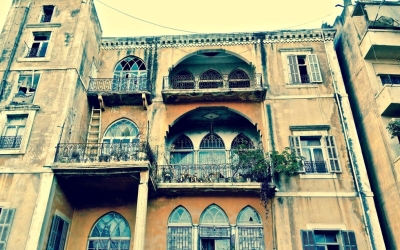
Every day since the blast, Dagher visits his neighbours to assess the extent of the damage and the cost of rehabilitation. His biggest fear would be to see them leave the district and sell their damaged houses to property developers.
"I got a phone call this morning asking if I wanted to sell my house," said Dagher.
Only a few days after the explosion, real estate agents and property developers started roaming the damaged neighbourhoods, offering to buy old buildings from owners who cannot afford the cost of reconstruction.
"The first thing a real estate developer will do is tear down the house and build a tower instead. They're on the hunt. A lot of people got offers," said Sursock Cochrane, who said he refuses to sell.
"They're like vultures."
For many in Beirut today, the opportunism of some developers is a disturbing callback to the post-war era in the 1990s, when certain once-popular neighbourhoods - notably in the city centre - were gentrified and turned into high-end areas inaccessible to most Beirutis.
Faced with land predation, heritage defenders are not alone. Hundreds of Lebanese citizens have mobilised to help owners clean their houses or relocate temporarily. Aid is also coming from abroad. Dozens of private donors have already pledged they would support the reconstruction of historic buildings.
"The explosion had shed an unprecedented light on Lebanese heritage. Before, houses used to disappear one by one, and people didn't really realise what was going on," said Dagher. "It is also an opportunity to create a new dynamic and train young craftsmen who will then teach new generations how to maintain these houses."
Modern heritage in the making?
Before the blast, the districts of Mar Mikhael, Gemmayzeh and the Beirut port were a playground for Lebanese and international contemporary architects. Alongside Ottoman villas and 20th century housing, their modern buildings were also severely hit by the explosion.
"It was a city of experimentation," said Lina Ghotmeh, a Franco-Lebanese award-winning architect.
Her flagship project, the Stone Garden, is a few dozen metres from the port of Beirut. Its design was inspired by Ghotmeh's experience growing up during the Lebanese civil war. With heavy walls and relatively small windows, it looks a bit like a bunker.
Ironically, it is one of the buildings that best withstood the explosion.
While the traditional houses will be restored to their original form, Ghotmeh hopes she can keep something of the explosion within her walls.
"This event makes us want to create again," she says. "Since the whole idea of the building was to tell the story of the city, I would like to incorporate the memory of this explosion.
"When you look at all the pieces of glass on the streets for example... we can invent something around that, to remember."
Middle East Eye delivers independent and unrivalled coverage and analysis of the Middle East, North Africa and beyond. To learn more about republishing this content and the associated fees, please fill out this form. More about MEE can be found here.





